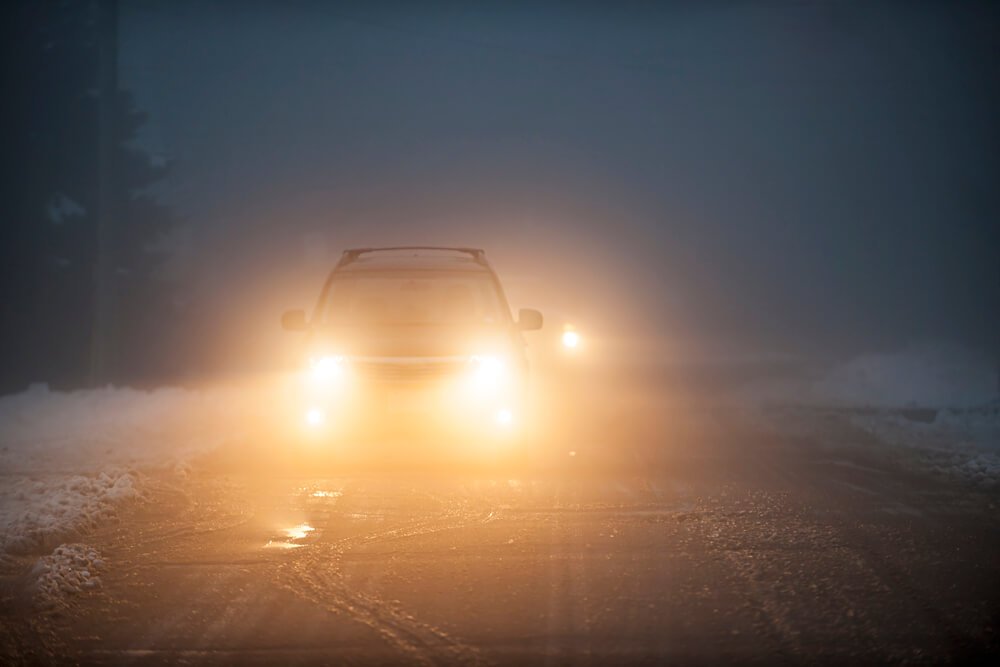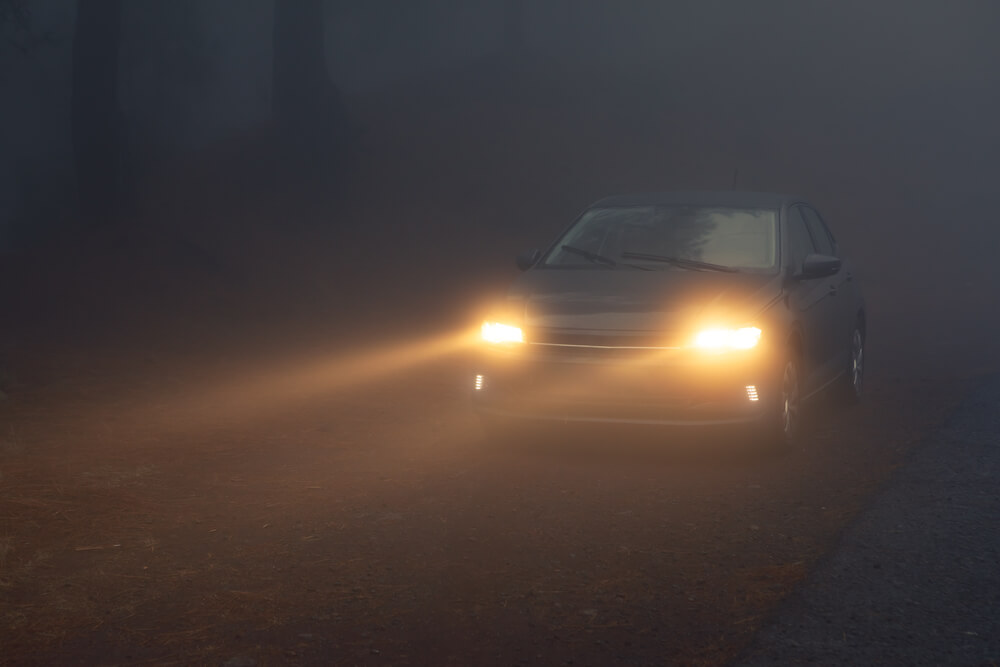Last Updated on July 23, 2023 By Emma W. Thomas
Headlights get foggy due to oxidation and UV exposure, causing the plastic lens to deteriorate over time. Environmental factors, such as sunlight, moisture, and road debris, contribute to this haziness. Regular maintenance, like cleaning and applying protective coatings, can help prevent and restore foggy headlights.
Why Do Headlights Get Foggy?

Headlights are a critical component of any vehicle, providing illumination for night-time driving and in poor weather conditions. However, they can often become foggy or cloudy, reducing their effectiveness. This issue is not just aesthetically unattractive but also impacts safety on the road. There are a multitude of reasons why this can happen.
- Oxidation
- One of the primary causes contributing to foggy or cloudy headlights is oxidation. This results from a chemical reaction that occurs when the plastic surface of the headlight lens interacts with the oxygen in the atmosphere. Over time, this process results in a foggy and dull appearance.
- Dirt and Debris
- Cars are frequently exposed to severe environmental conditions. Dirt, dust, sand, or pebbles might directly land on the headlights, leading to cloudiness or fogging over long periods of time.
- UV Radiation
- The ultraviolet (UV) radiation from the sun can also lead to discoloration and foggy texture on headlights. Prolonged UV exposure degrades the plastic material, leaving it yellowed and fogged.
- Continuous Wear and Tear
- Like any other part of a vehicle, headlights often experience general wear and tear. Over time, the protective layer or clear coat on the lens can wear away, causing fogging.
- Moisture
- Headlights are designed to be watertight, but sometimes, seals can fail, allowing moisture to get in. This moisture can then condense on the lens, creating the appearance of fog from the inside.
- Chemical Exposure
- Exposure to certain chemicals can fog or discolor headlights. Substances like harsh cleaners, acidic rain, or salts used to defrost roads can degrade the lens surface, causing a foggy appearance.
| Causes | Description |
|---|---|
| Oxidation | Interaction between plastic and oxygen |
| Dirt and Debris | Exposure to environmental conditions |
| UV Radiation | Prolonged exposure to the Sun |
| Continuous Wear and Tear | General aging |
| Moisture | Failed watertight seals |
| Chemical Exposure | Contact with harsh substances |
How Can You Prevent Your Headlights From Getting Foggy And Yellow?
You can protect your headlights from fogginess if you do the following simple tasks;
Parking Your Car Under The Shade
One of the main reasons your automotive headlights get foggy is oxidation due to exposure to the air and direct sunlight. You can prevent this by parking your vehicle under a shady tree or in the garage. You can also ensure that the headlight is not facing the direction of the sun. Doing this minimizes exposure to ultraviolet rays and hence slows down the oxidation process.
Polishing Your Headlights
If you notice any early signs of yellowing on your headlights, you can polish them to remove them and prevent more fogginess. To do this, get a clean microfiber cloth and apply a non-abrasive polishing medium. Use it to polish the lenses and remove any visible yellowing.
Cleaning Your Car Regularly.
Make sure that you wash your car headlights with automotive soap cleaner at least every three months. Doing this will help remove any chemicals and dirt that are responsible for promoting fogging.
Are There Any DIY Treatments For Foggy Headlights?

Yes. Several DIY methods are available for treating foggy headlights. You will first need to use an automotive soap to clean the lenses to give them a clean surface. Once the lenses are clean, you can use one of the following techniques;
Using Vinegar
White vinegar is a great DIY home remedy that helps to restore your headlights without much struggle. Place some white vinegar in a container (a basin will work well), then soak the lenses in the liquid after removing them. Use a rough sponge to rub away any grime on the lenses and reinstall them when you finish cleaning. This simple home remedy helps your headlights to look as good as new.
Using Baking Soda
A baking soda paste is another very effective substance that helps remove fogging on your lenses. To make the paste;
1. Put around five tablespoons of baking soda in a bowl, then add enough water. Mix carefully with a wooden spoon or a stirrer to make a paste
2. Using a sponge, apply the paste liberally to both headlights polishing with small circular motions. Leave the paste to sit for a few minutes, then rinse with clean water to reveal the results.
Application Of Toothpaste
Toothpaste is another inexpensive and readily available substance that will help clear yellowness from your automotive headlights. Apply this product directly on each lens using a soft dry cloth as you scrub lightly. Leave it for a short while before rinsing the toothpaste away and enjoy the new look on your headlights.
Sanding The Headlights
This process may require the services of a professional since you don’t want to ruin your lenses. An expert will know the right sandpaper to use and the correct procedure to follow. This method involves;
- Using water and soap to clean the headlights and their surrounding surfaces
- Remove any grime from the exterior housing to avoid scratching the lenses
- Dry the cleaned parts to ensure that there will be no moisture on the headlights during the restoration process
- Using painter’s tape, cover the surrounding parts of the headlights, and be sure to leave the housing exposed. Do not use more adhesive tape as this may damage your car’s paint
- Apply some little water on the sandpaper (start with 800 grit paper) and move it lightly in circular motions around the headlights
- Using finer sandpaper (1600 grit and above), repeat the process, but start from the opposite direction.
- Place some rubbing alcohol on a soft piece of cloth and wipe off the headlights to dry them
- While the headlights will look clear, you need to polish them with some toothpaste or a specialized headlight polish to give them a final touch
What Are Some Of The Hazards Of Driving With Foggy Headlights?
Besides a car with foggy headlights looking unattractive, they are also a hazard. Here are some of the reasons why you need to clean your headlamps;
- Foggy headlights make it difficult to drive at night since they do not put out enough light.
- Fogginess will affect the distribution of light in the headlights. Foggy headlights give out light at angles, and this will be dangerous for other motorists.
- Fogginess may damage the headlamps since they absorb heat energy from the light and get quite hot.
- Foggy or yellow headlights lower the value of your vehicle, especially if you plan to sell it in the future.
What Are Headlights Made Of?
Headlights are essential components of motor vehicles, notably responsible for illuminating the road when driving at night or during foggy conditions. They contribute significantly to the safety of drivers, passengers, and pedestrians alike. So what exactly are these crucial components made of? Below are the key elements that form a typical headlight:
1. Housing
This is the outer part of the headlight, created for both aesthetics and protection.
- Typically, it is made from durable plastic materials, which are designed to withstand harsh weather conditions, impacts from small debris, and other external factors.
- However, older car models may have metal housings.
2. Lens
The lens plays a vital role in directing the beam effectively onto the road.
- Most of today’s headlights feature clear polycarbonate plastic lenses, appreciated for their durability, lightness, and resistance to impact.
- They are designed to focus and direct the light produced by the bulb onto the road.
3. Bulb
The bulb is the real luminary, the heart of any headlight.
- The type of bulbs used can largely vary. Here are some common types:
- Halogen bulbs: These are commonly used due to their relatively low cost. They produce light through a combination of a tungsten filament and halogen gas.
- Xenon or High-Intensity Discharge (HID) bulbs: These bulbs produce light by generating an arc between two electrodes. They emit a bright white or bluish light which covers a wider area than halogen bulbs.
- LED bulbs: Light-emitting diode (LED) bulbs are energy-efficient and produce a bright, white light. However, they are also relatively more expensive.
- Laser headlights: These are not common but are beginning to find their way into the marketplace. Laser lights are efficient and can illuminate a longer distance than LED or Xenon lights.
4. Reflector
The reflector is designed to maximize the light output.
- It functions by reflecting the light emitted by the bulb onto the lens, which then directs the light onto the road.
- Generally, it is crafted from smooth or corrugated silvered plastic or metal.
5. Wiring
These are typically made from copper and coated with plastic.
- The wiring transmits the electrical power from the vehicle’s system to the bulb, bringing the headlight to life.
Conclusion
There are many reasons why your car headlights get foggy, as stated above. Foggy headlights make it difficult for you to drive at night due to poor visibility and can lead to accidents. Yellow or foggy headlights will also make your car look unappealing, and it is necessary to clean them and restore the great look. By following the above steps, you will easily wash your headlights and give your car a better look.
References:
https://glassdoctor.com/blog/why-your-headlights-get-foggy
https://blog.betterautomotivelighting.com/why-do-my-headlights-fog-up-its-more-common-than-you-think
Emma is a graduate of Domestic Science or Family and Consumer Sciences (Home Economics) from the University of Wisconsin. She has 7 years of experience Working with the strategic section of BestBuy and now writing full-time for Homeeon.
From Managing the Home, Interiors, Cleaning, and Exteriors to Gardening and everything about Making A Home Liveable – is her passion and this Homeeon is the result of this.
Emma loves decorating her home with the best stuff found online. She cares about quality over anything and writes reviews about them here in Homeeon. Get in touch with her over Pinterest.
Keep reading her blogs.

